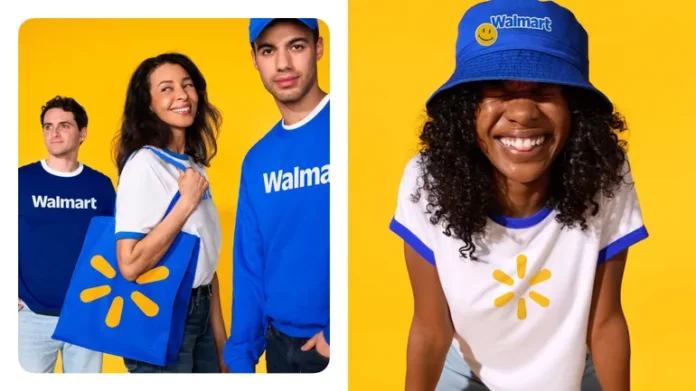Walmart, one of the largest retail chains in the world, recently unveiled a new brand identity refresh for the year 2025. This update comes at a time when the retail industry is undergoing significant changes due to technological advancements and shifting consumer preferences. The last time Walmart updated its brand was during the Great Recession, and since then, the company has evolved to become a prominent omnichannel retailer, offering a seamless shopping experience both online and in-store.
The new visual identity for Walmart includes vibrant colors such as True Blue and Spark Yellow, a redesigned spark logo, and a custom font called Everyday Sans. These changes are aimed at aligning the brand’s image with its current position in the market and connecting its heritage to its future vision. The spark logo, which has been a key element of Walmart’s branding since 2008, will now be featured more prominently as a standalone symbol, reinforcing Walmart’s brand equity.
Jones Knowles Ritchie and Landor were instrumental in the brand identity overhaul, working on different aspects of the refresh to ensure a cohesive and impactful design. Publicis Groupe is responsible for core marketing and advertising services for Walmart.
The shift towards a digital-first strategy is evident in Walmart’s brand evolution, with a focus on enhancing the online shopping experience and leveraging technology to meet changing consumer demands. The launch of Walmart+ in 2020 and the company’s increased investment in e-commerce have contributed to its growth in the digital space, with e-commerce sales up 22% in the third quarter of fiscal year 2025.
Walmart’s goal is to become an inspirational, digital retailer, known for its convenient services and modern brand image. The updated brand identity is designed to build credibility, establish a connection with customers, and position Walmart as a culturally dynamic brand in the retail industry.
In addition to its digital initiatives, Walmart is also introducing full-colored illustrated murals in its store locations to enhance the shopping experience and help customers navigate different departments. These murals add a storytelling element to the store design and create a more inviting atmosphere for shoppers.
Overall, Walmart’s brand refresh for 2025 reflects the company’s commitment to innovation, customer-centricity, and embracing new trends in the retail industry. By staying true to its heritage while adapting to the changing market landscape, Walmart aims to remain a leader in the retail sector and continue to provide a seamless shopping experience for consumers both online and in-store. Pepsi recently underwent a rebranding in 2023, unveiling a fresh new look that incorporated electric blues and deeper blacks, along with a revamped wordmark and decorative packaging. This marked the first visual overhaul for the brand in 14 years, signaling a departure from its previous emphasis on simplicity.
The decision to embrace maximalism with bold colors and intricate designs reflects Pepsi’s desire to stay relevant and capture the attention of consumers in a crowded market. By updating its visual identity, Pepsi aims to create a stronger connection with its audience and differentiate itself from competitors.
In a similar vein, retail giant Walmart has also embarked on a refresh of its brand identity to provide a more consistent and user-friendly experience across all channels, including its app and website. The new design features a modular grid system for browsing that showcases product images, photography, and headlines, among other enhancements to what Walmart’s Chief Customer Officer, Janey Hartman, referred to as the brand’s “operating system.”
Hartman emphasized the importance of maintaining visual consistency across digital and physical touchpoints to create a seamless experience for customers. The goal is for consumers to easily recognize and associate the brand with a specific look and feel, regardless of how they interact with Walmart.
As Walmart rolls out its new look, it will be integrated into the brand’s marketing campaigns and activations in the first quarter. However, Hartman stressed that the transition will be gradual, with careful consideration given to which assets are transferred and when. This phased approach ensures a smooth and cohesive evolution of the brand’s visual identity over time.
Both Pepsi and Walmart’s rebranding efforts underscore the significance of visual identity in shaping consumer perceptions and driving brand loyalty. By refreshing their designs and embracing new aesthetics, these companies are adapting to changing market trends and consumer preferences while reinforcing their commitment to innovation and staying ahead of the curve.
Overall, the rebranding initiatives by Pepsi and Walmart signal a strategic shift towards modernity and relevance in a constantly evolving marketplace. As these brands continue to evolve and engage with consumers in new ways, their refreshed visual identities will play a key role in shaping their future success.




